With so many grass-fed butters on the market these days, it’s hard to decide which one is the best to purchase. I’ve got you covered with a review of 5 grass-fed butter brands!
Organic Valley
Color: 4/5 – The color is quite good, but it’s ONLY churned May-September, so I would have thought it would be a bit darker.
Taste: Since this butter is cultured, it has a bit of a tang to it, almost cheese-like. It is only lightly salted, so it can taste a little more “oily” than I like. But it is AMAZING on popcorn. It makes it taste like theater popcorn, only more real.
Ingredients: Pasteurized Organic Sweet Cream (Milk), Salt, Microbial Cultures.
Salt: From the Organic Valley website: “The salt used for Organic Valley products is pure mined salt, produced in the USA. It is high purity, food grade granulated sodium chloride. The salt is processed to remove impurities (such as heavy metals) and crystallized with no additives. Therefore, the salt used does not contain iodine or flowing agents (like aluminum).”
Claim: “Organic Valley Pasture Butter is made at the peak of pasture season, when our cows’ milk is naturally higher in omega-3s and CLA. As always, there are no synthetic additives in our Pasture Butter—its gorgeous golden color comes from summer grasses, not from man-made dyes. ALWAYS ORGANIC. Absolutely NO antibiotics, synthetic hormones, toxic pesticides or GMO anything.”
From what I can tell, this butter is not 100% grass-fed. It is only produced May-September so probably MOST of their food is grass. But they probably do receive supplemental feed:
“Supplemental organic grains can include any of the following: corn, soy, oats, barley, triticale and other small grains. Animals also receive necessary mineral supplements that sometimes include non-iodized salt.”
Availability: You will most likely be able to find this butter in a health food store. You can also purchase it from Azure Standard. It’s also available on Amazon.
Price: This butter retails for around $9 a pound. However, you can find it for $7.25/pound on Azure, or as low as $6.50 if you buy 15 pounds. I have purchased it for around $5.50/pound when it went on sale at my local health food store.
Anchor:
Color: 4.5/5
Taste: Anchor butter has a distinct flavor which is hard to describe – kind of tangy like the Organic Valley Pasture Butter, but a bit different. It has a good amount of salt. It’s also very soft, presumably because it is triple churned.
Ingredients: Cream, water, and salt – I’m a bit confused as to why it contains water, but the fat content is actually higher than some of the other butters.
Salt: I couldn’t find any information on the type of salt used in Anchor butter. I contacted the company – I’ll let you know if I get a response!
Claim: From the Anchor website: “The cows that produce milk for Anchor butter are pasture-raised and grass-fed. This also means our cows are raised naturally under humane living conditions at all times. Butter made with milk from grass-fed, free-range cows has a richer taste versus butter made with milk from barn raised non grass-fed animals. Butter from grass-fed cows is also proven to be higher in Omega 3, Beta Carotene and Vitamin A. The New Zealand government prohibits the use of animal growth hormones in dairy, sheep and beef farming, so our products are always rBST-free.”
I’m not sure what percent grass-fed Anchor butter is, but the cows are on grass all year long.
Also, they have a completely organic version that comes in plastic tubs. So if you want to be sure that you are avoiding all GMOs, go for the organic one.
Availability: You may be able to find this butter in health food stores or specialty/non-big-box grocery stores. I went into a local grocery store and had them special order Anchor butter for me. I was even able to haggle about the price! You can also purchase it on Amazon.
Price: This butter retails for about $7/pound for the non-organic version, or $9.30/pound for organic. I was able to convince the grocer to lower the price of the organic butter to the same price as the non-organic one. Score!
Rumiano:
Color: 4/5
Taste: This one was pretty salty. The flavor is more like regular butter. I’m not sure if it’s because it comes in a regular paper wrapper, but this one had an almost freezer-burnt flavor. But I find that most regular (non-grass-fed) butter has that flavor.
Ingredients: Organic cream, sea salt.
Salt: Rumiano uses sea salt, but it’s not clear if they use unrefined or refined sea salt.
Claim: From Azure standard: “This butter is from grass-fed cows with year-round access to pasture. European-style butter refers to the content of fat and moisture in this butter – no culture is added.”
How Rumiano defines grass-fed: “At Rumiano Cheese we are proud to say that our dairies go the extra mile for grass fed milk production. The mild Northwestern coast of California has prime weather for grazing and pasture time. Year round access to pastures and naturally growing coastal grasses are imperative to our definition of grass fed feeding. Open pasture time and natural grazing allows the cows to roam freely makes for high-quality milk. Haylage and silage are used for feed when the weather is too wet and cold for pasture time which is seldom. The grassfeeding methodology benefits the animals and consumers by helping produce healthy and humane dairy products.”
Availability: I haven’t seen Rumiano butter in any local stores, but a grocer might be willing to special order it for you. You can purchase it from Azure Standard.
Price: I’m not sure what the retail price is, but you can get it on Azure for $3.75 for a half pound, or $5.21 a pound if you buy 15 pounds.
NOTE: Rumiano also makes a non-organic butter. It is always deeper yellow in color than regular butter, and it’s cheaper than their organic version. You can get it for $3.85/pound at the time of writing this post (prices fluctuate). You can find it on Azure.
Kerrygold:
Color: 5/5 (I give it five out of five since it was the darkest of the five butters I reviewed here. There may be another butter on the market that is darker than Kerrygold.)
Taste: This is just straight-up good tasting butter. SO much better than regular butter. It has a nice amount of salt and isn’t bland.
Ingredients: Cream, salt.
Salt: I haven’t been able to find any info about the salt used.
Claim: From the Kerrygold website: “The winds, rain and warming influence of the Gulf Stream all contribute to the lush grass our cows feed on year-round. They produce the sweetest, richest milk in the world, which makes our grass-fed cow’s milk Irish butter taste silky and creamy and glow a healthy, golden yellow.”
Kerrygold has lost popularity in the healthy food community in recent years because it came to light that their butter is NOT 100% grass-fed.
According to Kerrygold: “Irish dairy cows enjoy a healthy grass-based diet all year round. During peak milk production in the summer months, cows graze outdoors on our lush green pastures all day long. Even in winter months Irish cows enjoy a predominantly grass-based diet. They eat silage which is fermented high moisture fodder cut from summer grass and stored for winter feeding.
Irish dairy cows enjoy a healthy grass-based diet all year round. The vast majority of an Irish cow’s diet, almost 85 per cent, is from rich, natural grass. Supplementary feed makes up about 15 per cent of a cow’s diet. The exact percentages can vary depending on availability of the ingredients.
Like all natural ingredients, the weather can affect harvests, which in turn affects availability of ingredients to the agricultural industry.”
Taken from the Live Simply Blog, quoting Kerrygold: “Our ongoing discussions with the grain and dairy industry have established that of this approximately 10% grain/supplements, approximately 20 to 25% may be from GM sources. This means that approximately 3% of a cow’s total typical annual diet may be from GM sources…
At present, the Irish Dairy Board cannot guarantee that grain supplements used by farmers will all be GM free…”
In other words, maaaaybe 3% of the feed given to the cows that produce milk for Kerrygold is GMO.
Availability: Kerrygold is widely available. You can get it at Walmart, Target, local grocery stores, and health food stores. You can also purchase it on Amazon.
Price: Kerrygold runs about $3.25/half a pound at our Walmart, but I know it’s cheaper at Trader Joe’s or Costco.
NOTE: The Kerrygold unsalted butter is cultured.
Graziers:
Color: 3/5 The color is a little darker than regular butter, but not a lot. Perhaps I got a light batch?
Taste: This butter has a lovely, light flavor. Almost a buttercream frosting flavor. But it doesn’t have enough salt for my taste.
Ingredients: Cream, sea salt, and cultures
Salt: I haven’t been able to find any details about the type of sea salt used.
Claim: (From Azure standard) “Graziers products are Certified Graziers, meaning we are allowed to get a third party audit for our Graziers certified farmers. This way we are able to keep track that at least 70% of their dietary intake is live grass from pasture, and that the rest of their diet is made up of non GMO grains. We can also make sure that the cows are on pasture for at least 300 days out of the year and that the pastures they are grazing on, are being rotated properly so the grass has a chance to regrow with all the same lovely nutrients. With this certification we are able to more diligently keep track of what the cows are consuming, and we love that!”
Availability: I haven’t seen this in any stores. You can purchase it from Azure.
Price: On Azure it’s $4.40/half pound, or $7.12/pound if you buy 6 pounds.
Which Grass-Fed Butter is the Best?
If we’re talking pure health-factor, I would say that the Organic Valley Pasture Butter is the best. It’s certified organic so you know that any supplemental feed is non-GMO and organic. Also, the butter is cultured so it has the added benefit of being a cultured food.
If we’re talking taste, it really depends on what you’re looking for. If you like a very normal butter flavor, I think Kerrygold is best – it’s WAY better than most store-bought flavors, but it isn’t funky at all. And if you like a bit of tang, Anchor butter is definitely distinct. The Organic Valley is also very nice, but it isn’t quite salty enough for my taste.
If we’re talking availability, Kerrygold wins hands-down. I mean, it’s available at Walmart!
If we’re talking value for money, I’d say the Rumiano wins. It’s USDA organic so you know that the cows aren’t fed any GMOs. It’s also Project GMO certified, and it’s a nice deep yellow color. AND it’s only $5.21/pound on Azure if you buy 15 pounds.
If you’re really strapped for funds, you could also buy the non-organic Rumiano butter. The cows might be fed GMO-grain, but it’s always a deep yellow color when I buy it, so you know the cows are on pasture.
WHEW! That was a lot of info.
There are several other grass-fed butters on the market, but these were the ones that seemed most readily available to me.
Let me know if there’s a brand of grass-fed butter that you’d like me to test out!
xoxo
Erica
READ MORE:
- Updated Grass-Fed Butter Review
- Blind Butter Taste Test
- Butter Mayonnaise
- How to Brown Butter
- How to Make Butter
NOTE: Some links are affiliate. All opinions are my own. If you click on a link and make a purchase, I will make a small commission. This has zero impact on the price you pay, and it helps to keep Buttered Side Up running. Thank you so much!

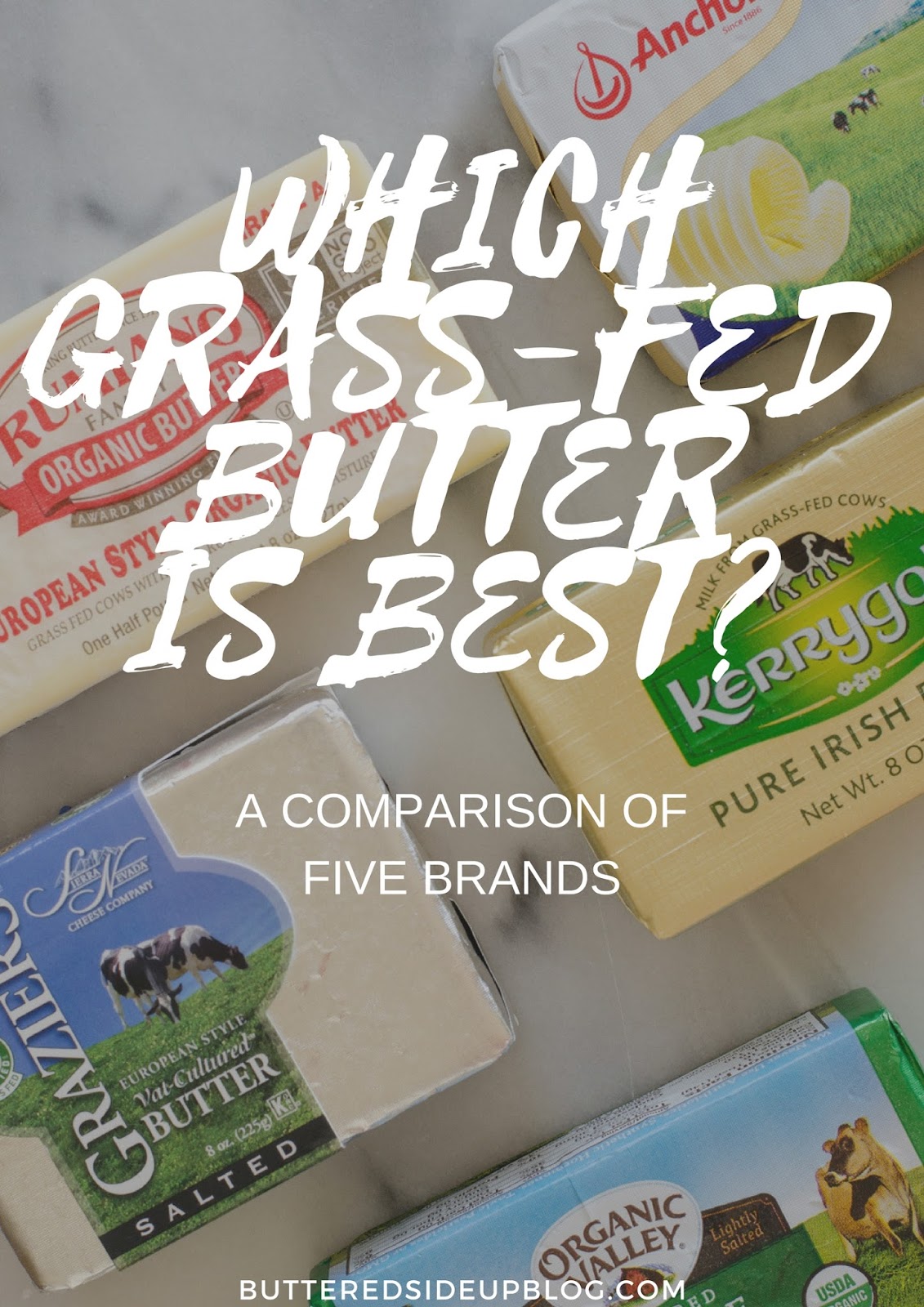
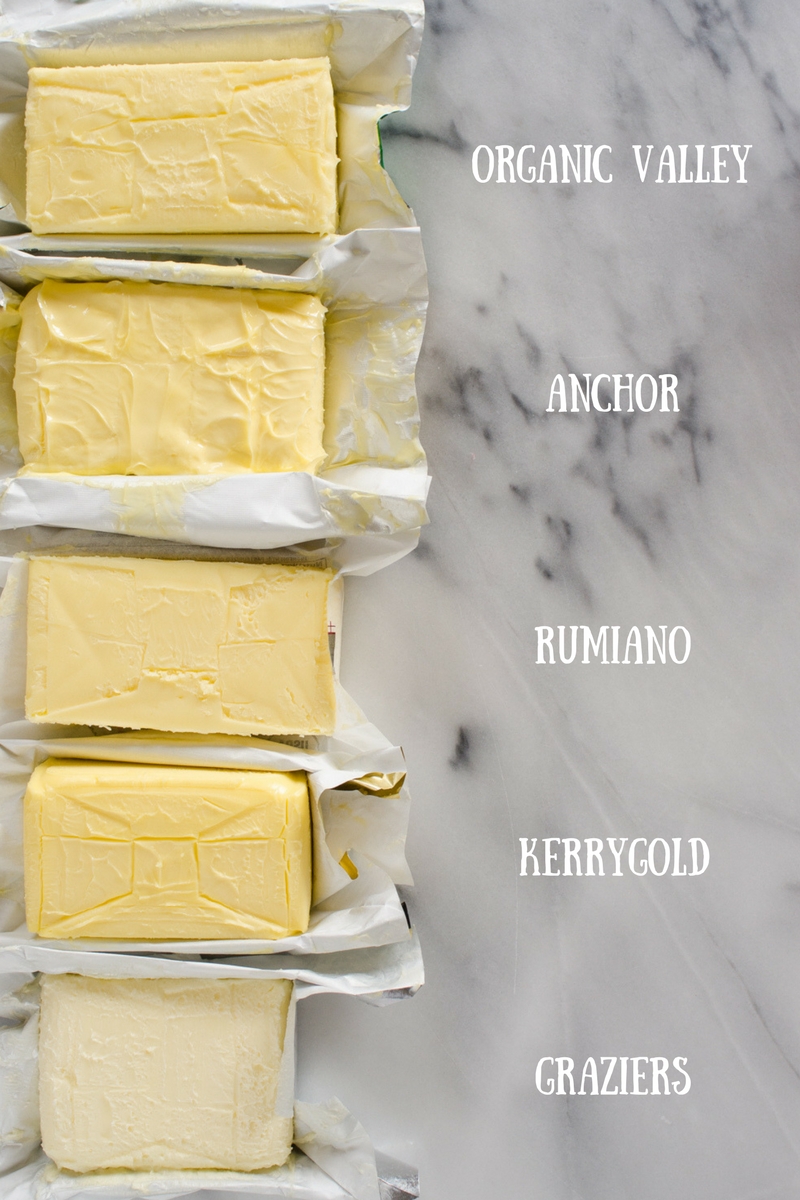
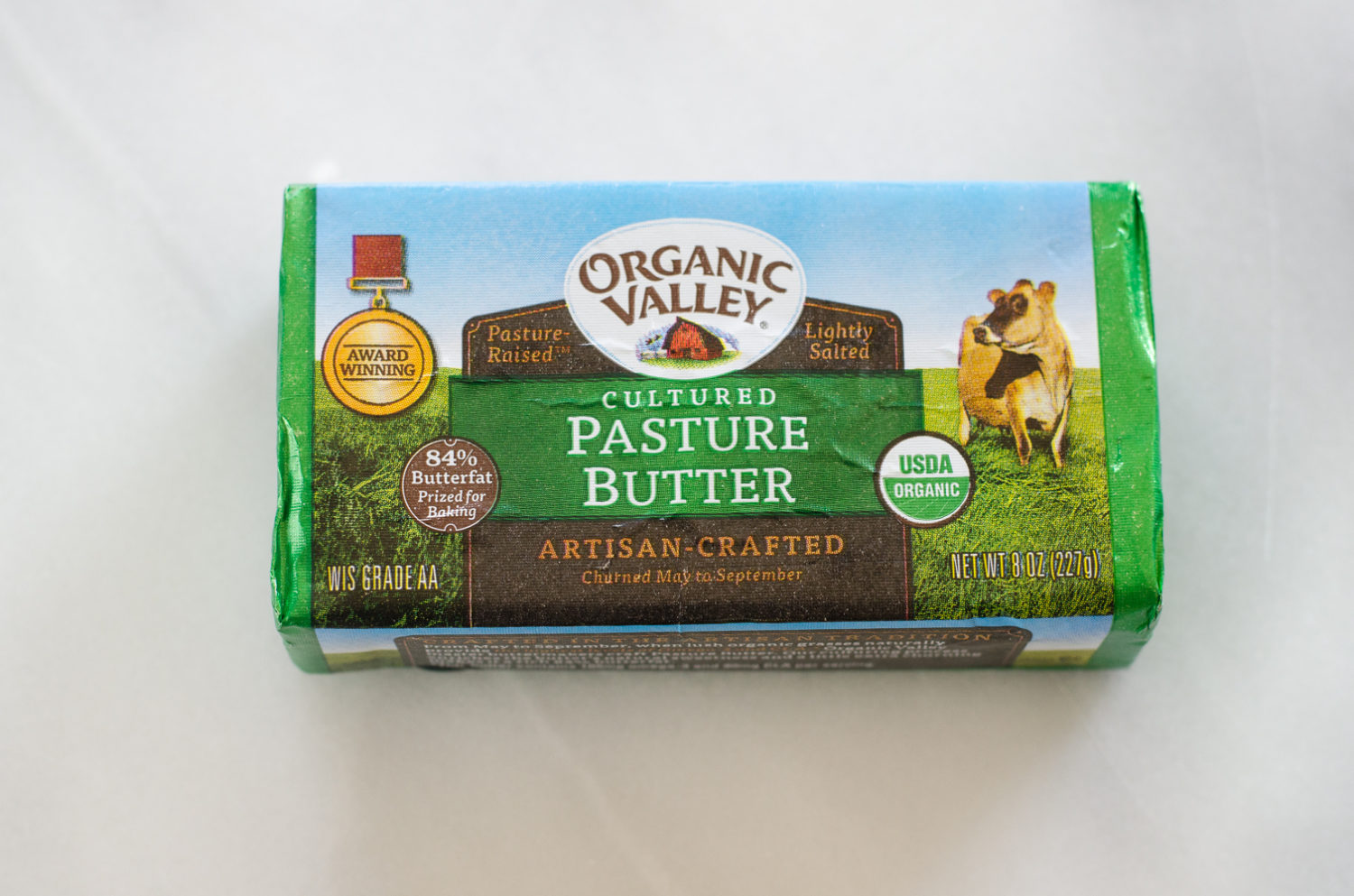
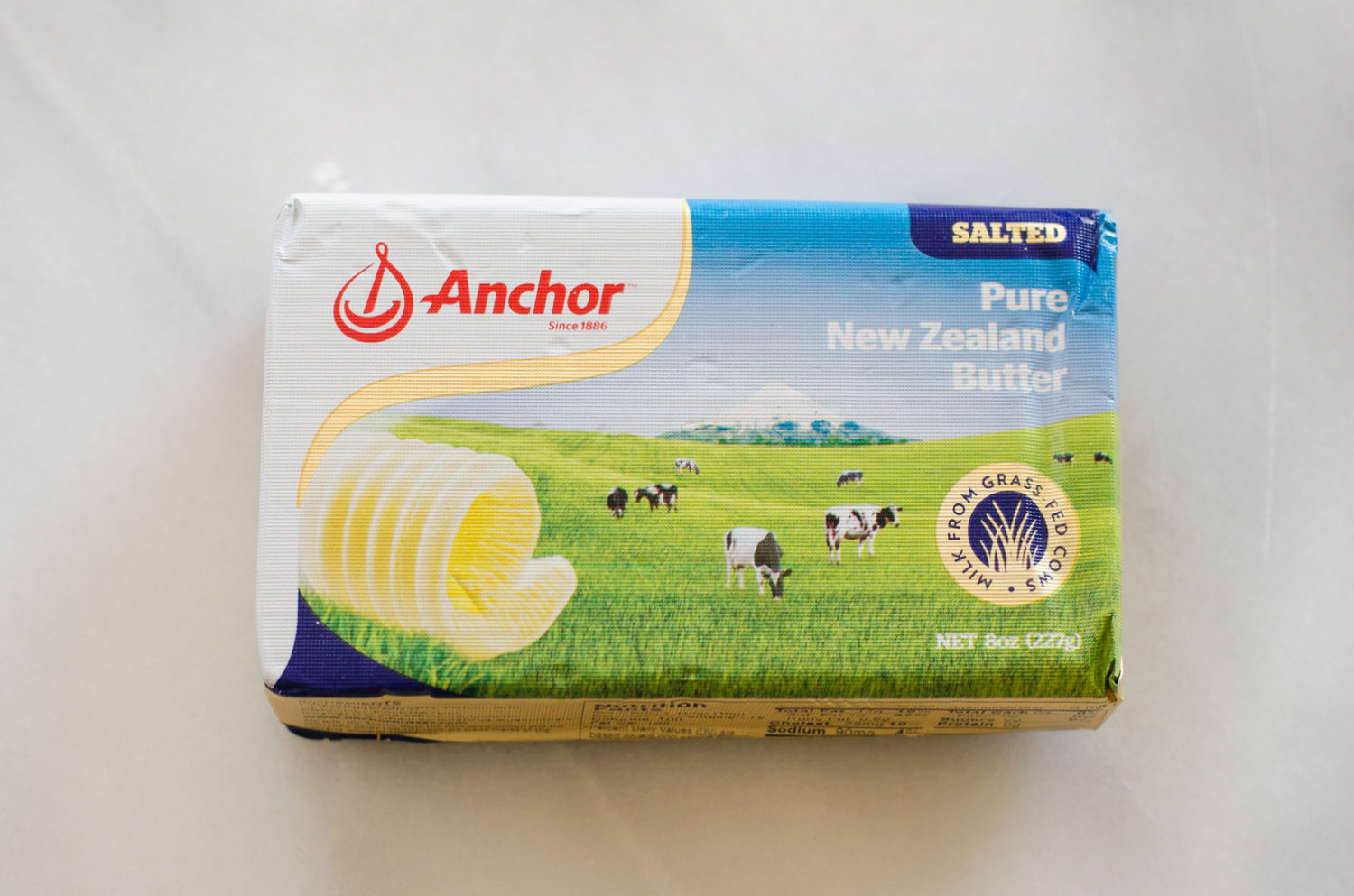
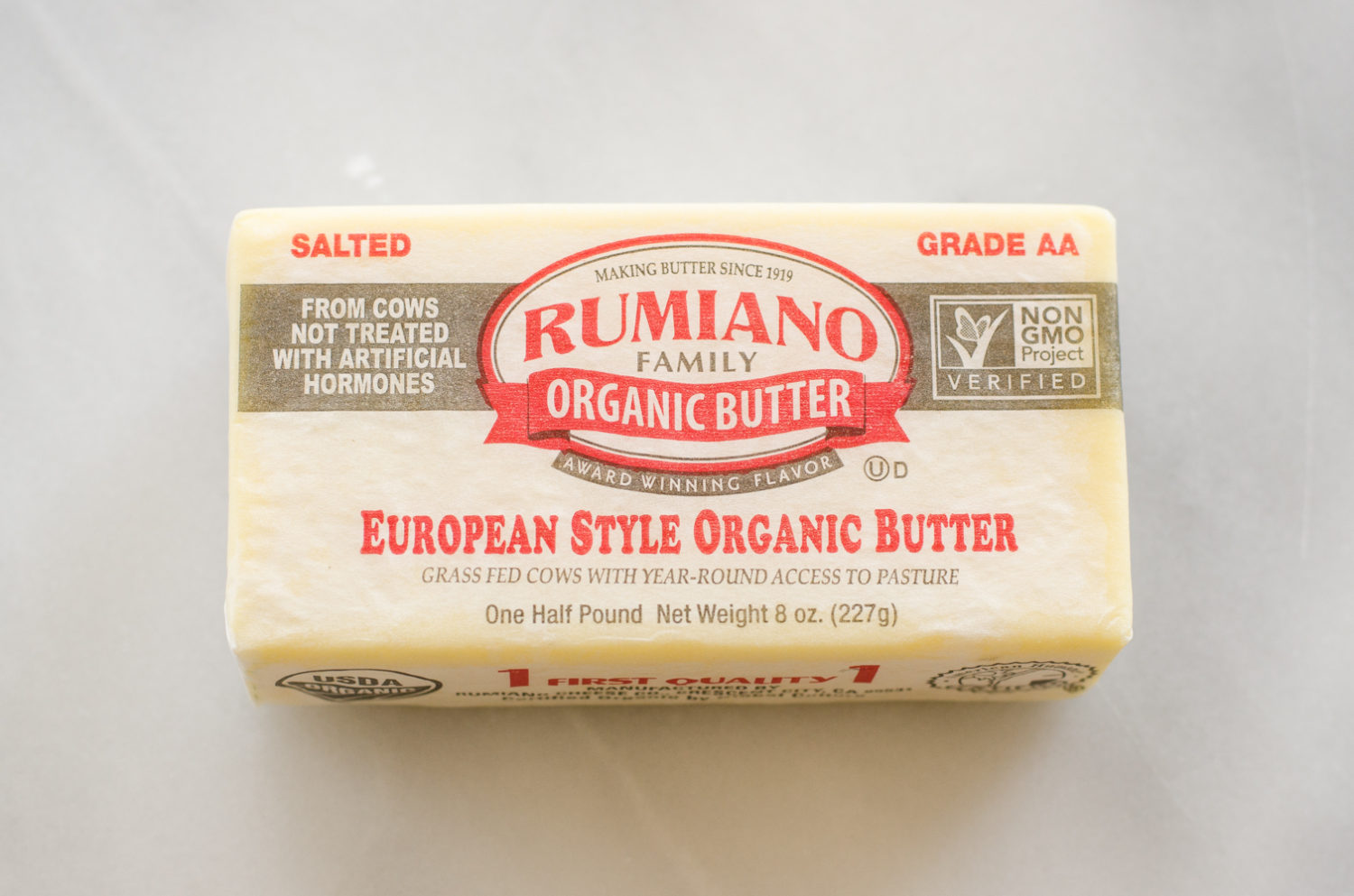
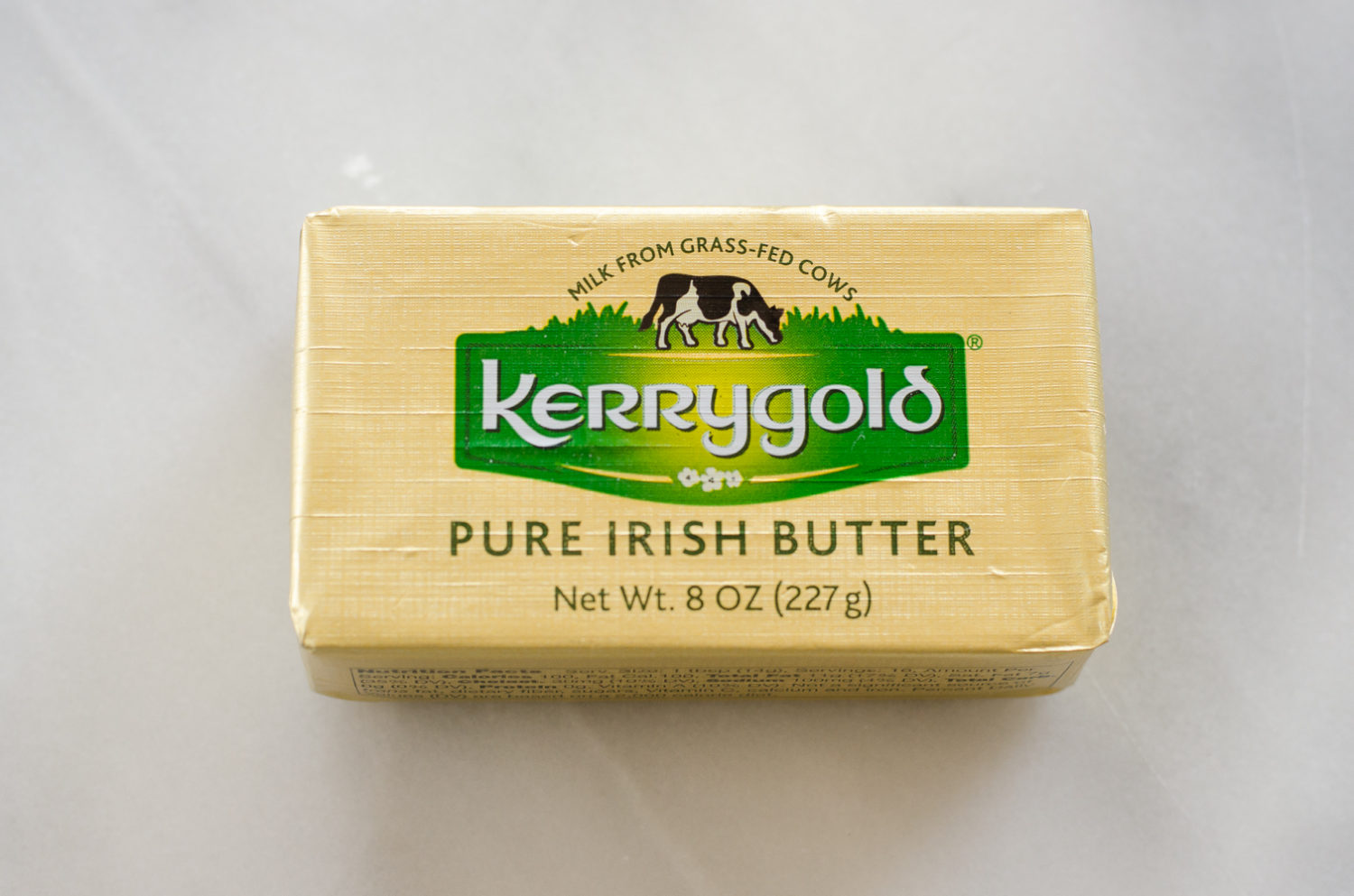
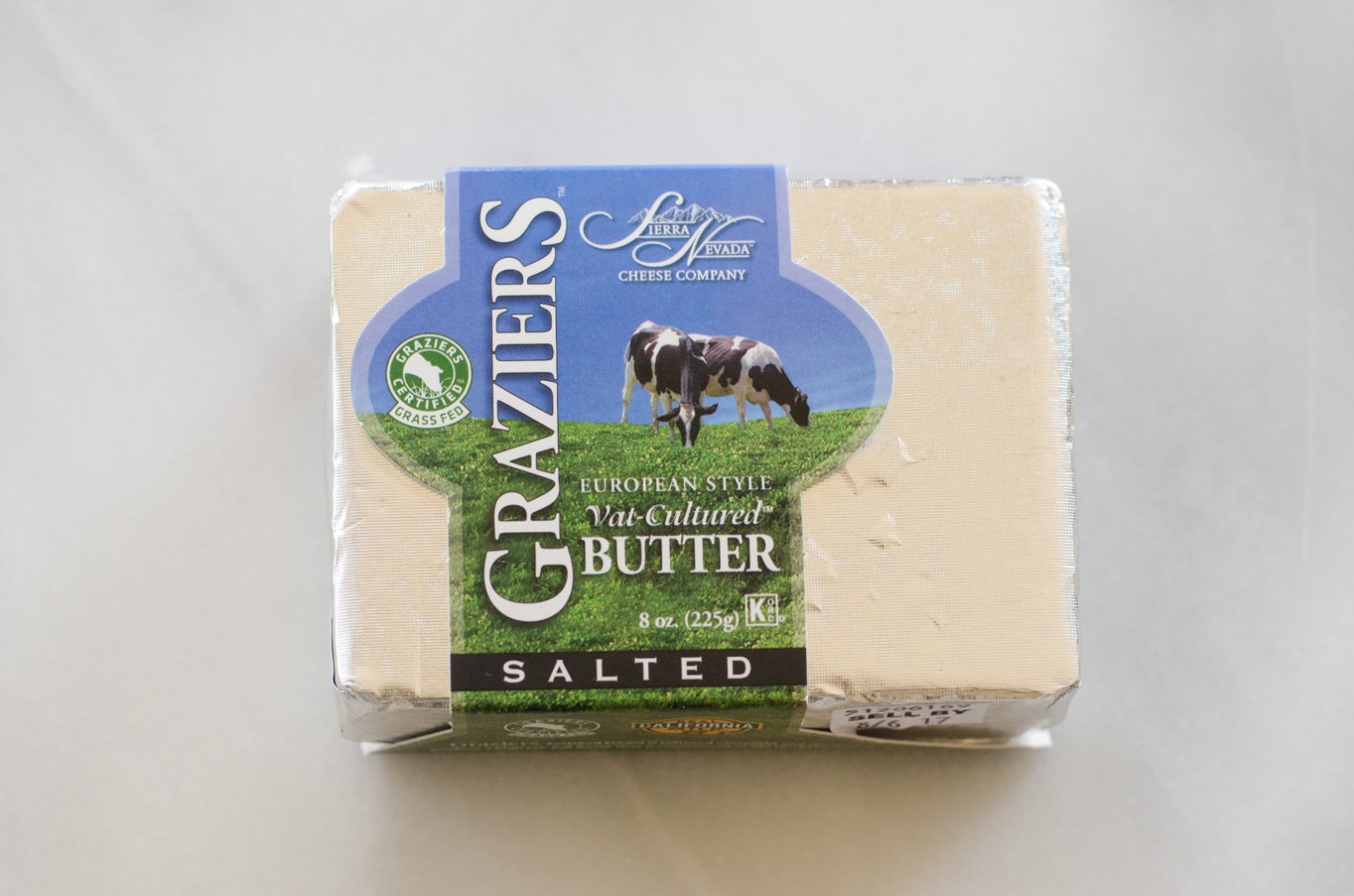
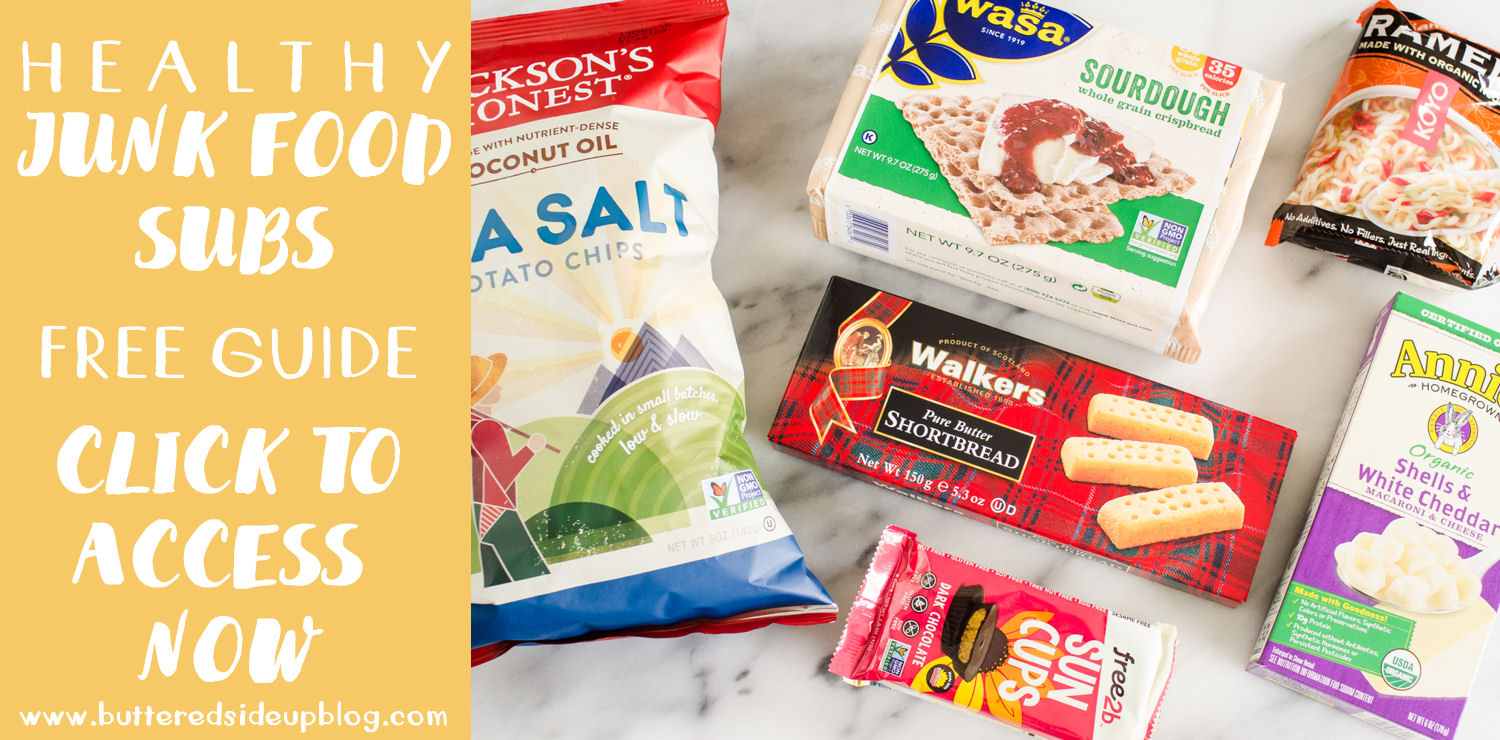
Tricia Fryer
Thursday 11th of April 2024
I am allergic to Casien, which of these butters would be safest for me to eat? Thanks
Erica Kastner
Thursday 11th of April 2024
I think your best bet would be a butter that's made with A2/A2 cream, but please consult with your doctor before consuming to ensure you won't have a reaction! I am unaware of a widely available butter on the market that's made with A2/A2 cream, sadly. But you can find a few online for a hefty price.
Soni
Thursday 2nd of November 2023
Which butter would recommend to make ghee at home?
R. Suze
Friday 1st of September 2023
Hi There. Was glad to find this article and learn of other brands than Kerry Gold. Would be great if you could update this since the two class action lawsuits against Kerry Gold...one for PFAS and the other for misleading info about percentage of grass feed. They have not been forthcoming. Products were pulled from shelves in NY and CA. Many thanks for your time!
Carolyn Graff
Sunday 9th of July 2023
do you eat organic pastured RAW butter? you can get it shipped to you if it's not available where you live.
Kyle
Tuesday 28th of February 2023
Just A heads up, may want to update your kerrygold pure Irish butter review. Recent lawsuit claims it has pfa's.
Abigail
Thursday 13th of April 2023
Yes! I heard this too. I am curious if the blogger can recommend any grassfed butters sold in PFAS free wrappers.